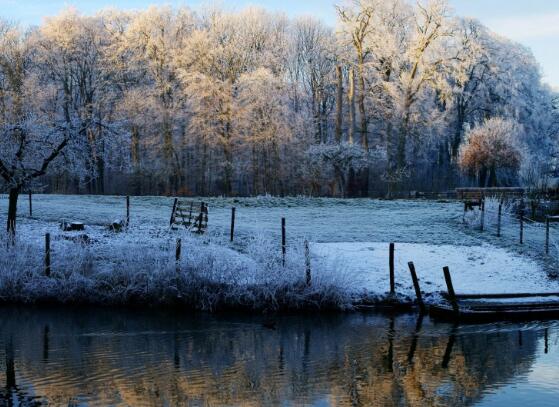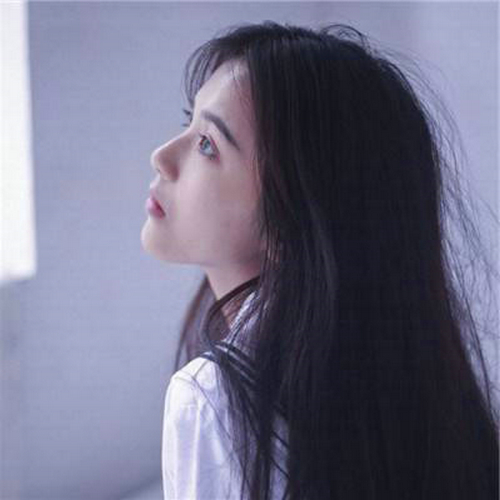
南岳衡山祝融峰中英文导游词
Good morning! Ladies and gentlemen: Today we will go and visit the Nanyue Temple, Nanyue Temple is situated on the northern tip of Nanyue Township and at the southern foot of Chidi Peak. In a layout of nine rows, It is the largest and best-preserved ancient palatial architectural complex of south China. Magnificent and splendid with resplendent upturned eaves. Inside the east in parallel to eight Buddhist palaces on the west, It is indeed a wonder in the history of religion that Taoism. Buddhism and Confucian culture can co-exist within a single temple. The exact time of the construction of Nanyue Temple is unknown. It existed asearly as in the Qin and Han Dynastis. Originally Located on the summit of Zhurong Peak, The temple was later moved to the mountain foot to facilitate the religious activities. The beginning of the Tang Dynasty witnessed the formal construction of the Heavenly Lord Huos Temple the Heavenly Master Temple. So as to enshrine and worship the Gods of the five sacred mountains, During the Song Dynasty the immortal of the Hengshan Mountain was revered as the Heavenly Master Zhaosheng,as a result the temple was gradually expanded and enlarged. Since the Tang Dynasty Nanyue Temple had beed subject to six fires and 16reconstructions all through the Song. Yuan, Ming and Qing Dynasties. In the 8th year of Emperor Guangxus reign in the Qing Dynasty (1882 A.D), the Imperial Court ordered the rbuilding of Nanyue Temple. Which had been ruined by lightning, The project was imitative. Copying the styles of the Imperial Palace. And even to the present day it is still well preserved. Fenced with red-brick walls.Nanyue Temple ccupies an area of some 70.000 square metres. From north to south lies in sequence nine rows and four courtyards-Lingxing Gate. Kuixing Tower. Chuan Gate. Pavilion of Imperial Study, Main Hall, Dwelling Palace and the Northern Rear Exit. The whole architecture complex stretches across on axis extending from south to north with its halls linked up together. The winding corridors and wing-rooms on both sides merge with each other. Accentuating the magnificence of the stature of the principal part. On the east side of the main temple there are eight Taoist palaces. Coordinating with eight Buddhist palaces on the west side. The first row is Lingxing Gate. Two gilded Chinese characters Mountain Temple are shining on the white marble at the top of the gate. The marble gate stands as high as 20 metres with a width of 1.1 metres and is meant to imply that during the past dynasties all the religious activities were officiated by real knowledgeable people. The second row is kuixing Tower. The most perfectly preserved ancient stage in Human Province.with a breadth of 35metres and a length of 12. Its fa?ade facing the main palace, the stage is the place where people hold religious activities and perform local operas during pilgrimage. Before the tower stands a pair of 2-metre tall stone Kylin (Chinese unicorn). With their furious eyes widely open. They are like two solemn looking sentinels guarding the tower.The pebble path under the Kuixing Tower leads to the third row-Main Chuan Gate. East and West Gates. The gateway is made of gray bricks with an awesome depth and height of 15 metres. The courtyard within is filled with dense cypress trees and carpeted with green grass. The fourth row is the Pavilion of Imperial Study. Distinguished by its gilded tiles. Octagonal doubleeaved roofs and exquisitely-crafted arches. Inside the pavilion there is a Bixi in the shape of a legendary animal like tortoise. Legend has it that Bixi is the ninth son of the dragon. The Bixi carries an imperial stele on which the full text of On Rebuilding Nanyue Temple was carved in the 47th year of Kangxis reign(1780 A.D.) in the Qing dynasty. The fifth row is Jiaying Gate. Named after the line from The Annals of Han-Books of Rites and Joys: This row is the place where local magistrates and monks welcomed ritual officials dispatched from the capital. After the Jiaying Gate the sixth row comes into view-Tower of Imperial Study. Which is the storehouse of the collection of imperial calligraphies .messages and inscribed boards concerning the past emperors ritual presentations to the mountain. Sweeet osmanthus ahead of the tower submerges the building with its refreshing scent when it blossoms every autumn. The seventh row is the Main Palace. Surrounded by towering old trees. Camphor trees planted in the Song Dynasty and cypress in the Ming Dynasty compete with each other in setting off the beauty of the upturned double-roofs and the splendour of the palace. Adding tremendous awe to the Main Palac. As it stands 29.11 metres, its girandeur rivals that of the Palace of supreme Harmony in the Forbidden City in Beijing. Inside the palace there are 72 stone pilliars, standing for the 72 peaks on the Hengshan Mountain. The two huge pillars upholding the main roofs were cut out of a whole granite. Each weighing 14 tons. Encircled by the balustrades are 144 relief sculptures carved out of white marbles. Based on Shanhai Jing . Pillars on the forefront overlap. Carved on them are 56 historical and legendary thles . On the square door were carved the Images. On the square door were carved the Images of the 24 filial Sons and the Images of the 18 Scholars. Here tourists can get a rough idea of the age-old Chinese Confucian and Taoist cultures. Clay statues-Heavenly King Zhaosheng and General Jin and Wu line up in the palace with their impressively dignified look, calling forth in tourists a feeling of profound respect. The eighth row is the dwelling Palacewith double roofs and in perfect harmony with the whole mountain. This structure keeps up the architectural style of the Song Dynasty and is decorated with coloured drawings and patterns whichare popular among palaces in the North. giving a sense of gorgeousness to this palace. The ninth row is the Northern Rear Exit. The end of the axial architecture, with Zhusheng Palace to the right and Chief God Palace to the left, At the back of the exit. A path leads farther into the mountain. Nanyue Temple occupies a prominent position in the history of ancient Chinese architecture. It carries the grandeur characterized by palaces in the North. And at the same time it smacks of the loveliness featured by gardens in the South. The architectural arrangement of the temple is clearly demarcated and gently modulated. Strongly indicating the ingenuity and originality of the craftsmen. Its ground and upper layouts are like an eternal musical movement with its own overture, main body and coda. Demonstrating the excellence of ancient Chinese architecture. Nanyue Temple carries a profound cultural connotation. It boasts a large number of clay statues. Wood engravings and stone carvings, which are all closely linked up with Chinese tradition and culture. Over 800 dragons of various sizes, which are the symbol of the Chinese nation.can be found everwhere in the temple. The carvings on the roof wood and white marble balustrades are an encyclopedia of ancient history and mythology. There are fairy tales- Pan Gu Creating the Universe. Hou Yi Shooting the Suns, Jing Wei Filling up the Ocean
南岳衡山的导游词四百字
南 岳 衡 山尊敬的各位来宾:欢迎大家来南岳参观游览。
南岳衡山为我国五岳名山之一,主峰祝融峰在湖南省衡阳市南岳区境内,七十二峰,群峰逶迤,其势如飞。
素以“五岳独秀”、“祭祀灵山”、“宗教圣地”、“中华寿岳”、“文明奥区”著称于世。
现为首批国家重点风景名胜区、首批国家AAAAA级旅游景区、国家级自然保护区、全国文明风景旅游区和世界文化与自然双重遗产提名地。
“南岳”一词,始于春秋战国时期。
《周礼·虞书》云:“(舜)五月南巡狩,至于南岳。
”以南岳称谓衡山,最早见诸文字是汉初《尔雅》,其《释山》篇有“江南衡”之说,意指江南衡山,后《尚书·大传》中解《虞书》云:“南岳,衡山”。
但是据《周礼·职方氏》、《春秋》、《星经》等典籍介绍,对南岳衡山的来历另有一番解释。
它是按星宿的划分,说这地方上承轸宿玉衡星,所以叫衡山。
衡山因地处五岳的最南端,故名南岳。
1984年,衡阳市成立南岳区,管辖三乡一镇一个街道办事处,总人口5.96万,总面积181.5平方公里,其中中心景区100.7平方公里。
南岳衡山自然风光秀美,四时景色各异,春赏奇花,夏观云海,秋望日出,冬赏雪景。
祝融峰之高,藏经殿之秀.方广寺之深,水帘洞之奇,自古赞誉为南岳“四绝”。
南岳衡山无山不树、无处不绿,核心景区森林覆盖率高达91.58%。
境内有树木600多科、l700多种,其中有国家级保护植物90多种,如号称活化石的千年银杏、水杉;濒临绝种、世界罕见、衡山特有的绒毛皂荚;以及摇钱树、同根生、连理枝等等。
负氧离子浓度平均值高达26000个,立方厘米,是难得的“天然氧吧”。
与之相伴的有珍稀野生动物黄腹角雉、锦鸡、大头平胸龟、穿山甲等,可以称得上是一座天然的生物宝库
南岳衡山历史源远流长。
五岳自古就是江山社稷的象征,炎帝、祝融曾在此栖息,尧、舜、禹均登临祭拜,历代帝王或遣使或亲临祭祀。
自尧舜以来.南岳衡山作为五岳之一的历史已达四千余年。
黄帝、舜帝曾在衡山巡狩祭祀;大禹为治水,专程来南岳杀白马祭告天地.得“金简玉书”,立“治水丰碑”。
宋徽宗、康熙等皇帝为南岳题诗吟咏。
相传黄帝委任祝融氏主管南方事务并封他为管火的火正官即火神;祝融教民以火熟食,生活御寒,举火驱兽;制乐作歌,以谐神明,以和人声。
人们为了纪念这位管火有功的火正官,便以他的名字祝融命名南岳衡山的最高峰,并在峰顶建祠用于长年祭祀。
南岳是中国南方唯一一座最古老的人文始祖的祭祀山。
自舜帝南巡至隋唐至清,历史上有记载的朝廷遣使祭祀南岳的就有120次之多,民间祭祀就不计其数了。
《星经》载:南岳衡山对应星宿二十八宿之轸星,轸星主管人间苍生寿命.故名“寿岳”。
唐玄宗于南岳朱陵洞(水濂洞)投龙祈寿。
宋徽宗在南岳金简峰皇帝岩御题“寿岳”巨型石刻。
康熙皇帝亲撰的《重修南岳庙碑记》之中钦定衡岳为亿万臣民的“主寿之山”。
中华祝颂词“福如东海,寿比南山”之“南山”即南岳衡山。
《辞源》释“寿岳”即南岳衡山,南岳衡山因而被称誉为“中华寿岳”。
南岳衡山不仅是风景名山,也是宗教圣山。
这里道佛并存,互彰互显,同尊共荣。
既有佛道儒共存共荣的南岳大庙,佛教禅宗尊为“六朝古刹、七祖道场”的福严寺。
视为“天下法源”、“曹洞祖庭”的南台寺,又有道家立为《黄庭经》发源地的黄庭观等。
道教“三十六洞天、七十二福地”中,南岳独占四处。
求湖南南岳旅游景点英语介绍(中文翻译)谢谢大家,尽量在150~200英文
你可以搜南岳衡山旅游网找信息,论坛里有很多相关资料。
南岳衡山旅游日记英文
南岳衡山旅游日记Heng Mountain travel diary南岳衡山旅游日记Heng Mountain travel diary
关于南岳旅游的详细攻略
南岳衡山旅游日记Heng Mountain travel diary南岳衡山旅游日记Heng Mountain travel diary



